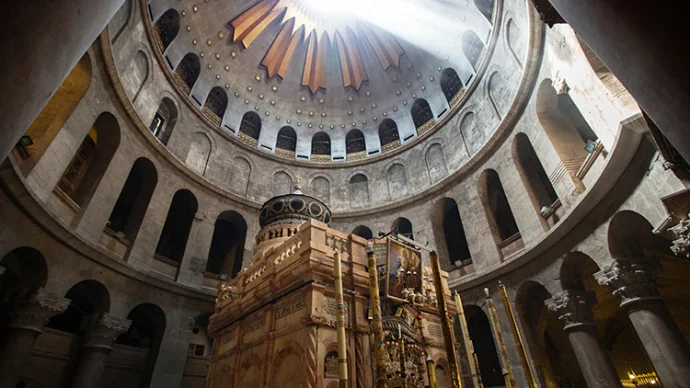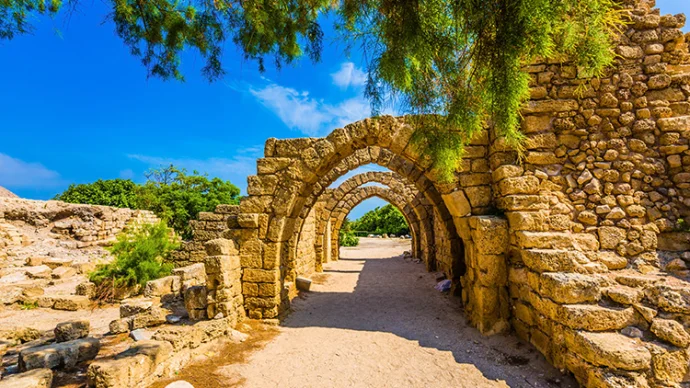
About Church of the Holy Sepulchre
The Church of the Holy Sepulchre in Jerusalem is holiest site in Christianity due the fact that it encompasses what are thought to be the last five stations travelled through by Christ, ending in his crucifixion.
History of the Church of the Holy Sepulchre
Built in 325/6AD by Roman Emperor Constantine I (the first such emperor to convert to Christianity), the Church of the Holy Sepulchre is located on what many Christians believe to be Golgotha/The Hill of Cavalry, where Christ is said to have been crucified and later resurrected. It derives its name – Sepulchre, meaning the tomb- from the belief that it is the site of Jesus’ burial.
It was Constantine’s mother, Helena, who went to Jerusalem and identified the site. Prior to the building of the Church of the Holy Sepulchre, the land on which it stands had been a temple to the deity Aphrodite, built by the Emperor Hadrian.
The sepulchre, the burial place of Jesus, is at the core of the church whilst the other four stations are clustered in The Hill of Cavalry. The décor of this section of the church is noticeably more opulent is believed to be the site of Jesus’ crucifixion.
The Church of the Holy Sepulchre has been destroyed and rebuilt several times throughout the centuries, it now mostly dating to the twelfth century following the First Crusade. At present the building itself is controlled by six Christian churches – the division of the site can be traced from the 11th century, and was solidified by the Ottomans in 1767. Whilst a good gesture, the practicalities are often frustrating – decisions take a long time to be made, and major restoration work is often delayed as a result. This division has not been tranquil and there continue to be violent clashes between members of different Christian churches; in 2008 a particularly hostile brawl between the Greek Orthodox and Armenian Churches had to be broken up by Israeli police.
Since 1981, the Church of the Holy Sepulchre has been a UNESCO World Heritage site as part of the Old City of Jerusalem and its Walls.
Church of the Holy Sepulchre today
The church is a major pilgrimage site: it’s often extremely busy, with pilgrims waiting to touch holy relics and spots. Security is tight, and guards are strict – cover your legs, shoulders and midriff before entering or you may well be refused entry or asked to leave. Having said that, it’s an amazingly atmospheric place, and even if for non-believers, the sheer history the site is steeped in feels monumental.
Getting to the Church of the Holy Sepulchre
The main entrance is via Christian Quarter Rd, deep in the snarl of roads and paths that make up Jerusalem’s Old Town. There are other entrances via Dabbaga Rd and the rooftop Ethiopian Monastery. Cars aren’t permitted in the Old Town: the Jaffa Gate is the nearest place to be dropped. Buses also stop on Rte 60 / Yafo Street.
Featured In

Constantine the Great Sites
Follow in the footsteps of Constantine the Great from the Hagia Sophia to the Church of the Holy Sepulchre and more, includes an interactive map of Emperor Constantine I locations.

Ruins of the Crusades
Explore the medieval world of the Christian Crusades at these 10 important sites, ruins and landmarks across Europe and the Middle East.

Roman Ruins Israel
Owing to it once being occupied by the Romans under Pompey the Great, Israel is home to a number of fascinating Roman ruins. Here's our selection of 10 Roman sites in Israel that any ancient history fan should visit.

Israel Historic Sites
An country with a diverse religious, cultural, and political history, Israel is home to a number of striking sites which are essential for any visitor wanting to understand the rich history of the area. Here's our pick of 10 which you shouldn't miss.




















